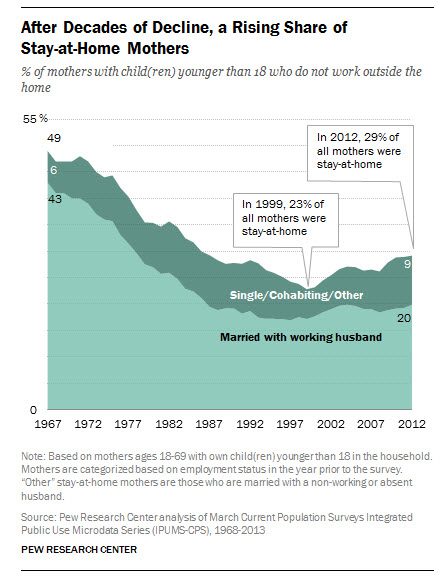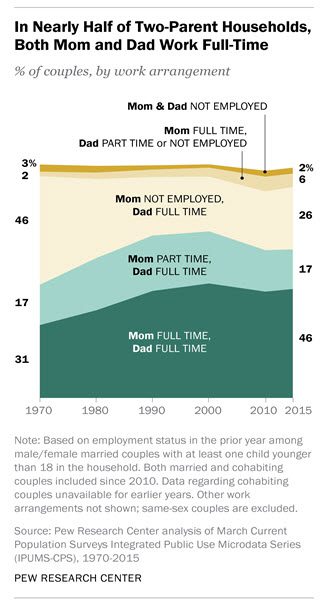![https://commons.wikimedia.org/wiki/File%3AHOUSEWIFE_IN_THE_KITCHEN_OF_HER_MOBILE_HOME_IN_ONE_OF_THE_TRAILER_PARKS._THE_TWO_PARKS_WERE_CREATED_IN_RESPONSE_TO..._-_NARA_-_558298.jpg; By Villalobos, Horacio, Photographer (NARA record: 8464479) (U.S. National Archives and Records Administration) [Public domain], via Wikimedia Commons](https://wp-media.patheos.com/blogs/sites/533/2016/08/1024px-HOUSEWIFE_IN_THE_KITCHEN_OF_HER_MOBILE_HOME_IN_ONE_OF_THE_TRAILER_PARKS._THE_TWO_PARKS_WERE_CREATED_IN_RESPONSE_TO..._-_NARA_-_558298-1024x688.jpg)
So once a month, my husband and I participate in a “CFM group” — that is, our parish’s equivalent to “small faith-sharing groups” but structured as Friday evening meetings where we go through a structured set of readings and discussion questions about some topic or another relating to Christian living, and then socialize. This past Friday, the discussion topic was fatherhood, and, of the younger couples in attendance — four couples with children ranging from infants to elementary school — there was a firm consensus: “you just can’t afford to have only one parent working these days.” And, in fact, in all of those families, both Mom and Dad worked.
Now, before you say, “so what? That’s just how it is in upper middle class neighborhoods,” let me add this: my oldest son is 17, my youngest is 10, and there seems to be a clear difference between even this small gap in generations. The mothers of my oldest son’s classmates, when he was in elementary school, were far more likely to be stay-at-home moms; I felt like I was the odd one out for working part-time. Among the mothers of my youngest’s classmates, especially those where the 5th grader is the oldest child, it’s the opposite — I’m the odd one for only working part-time. And certainly, in the sample size of 4 last night, these younger families — whose children were all born at/after the 2008 recession — all perceived it necessary for both parents to work full-time.
But here’s the thing: this apparent trend doesn’t fit in at all with the actual data.
Now, to be sure, the only data I’m able to find is (maddenly) only available in graphical format, so you just have to eyeball it. (Someday, when I get a job with a think tank, I’ll have access to the underlying data.) But here’s a chart from Pew that shows that the percent of mothers (taking into account all mothers with children under 18, not the subgroup of moms with preschool or elementary school children) who stay at home, hit a low in 1999, at 23%, then climbed, leveled out, and then climbed again since about the time of the recession.

This chart ends at 2012, which is irritating, and the only update to this data is in the form of a “squint to discern the percentages” version:

This chart can’t be read as a simple continuation of the prior one; you instead need to read this independently, but it’s clear that the category, “mom not employed, dad full time” has increased since about 2008 or so, partly at the expense of the part-time mom category. What exactly happened would be a lot easier to determine if this chart provided more underlying percentages during this time span, but it’s clear that the last decade did not see a burst of straggler moms rushing back to the workplace.
So, some theories:
My little corner of the world has just changed, ever so slightly. The burst of development in the early 2000s, the growth in teardowns and the building-up of the little suburban downtown, meant that the area wasn’t hammered by the housing market crash nearly as badly as other areas, and that truly meant that even that small gap in years meant a big gap in affordability, so that it is truly the case that for a young couple now, who hadn’t built up equity by buying in the ’90s (that’s when we bought our starter house; our move-up house came in 2003), our neighborhood and the surrounding area simply isn’t affordable.
This is a generational effect in a different way. As it happens, there are an unusually large number of second-generation parishioners, where either the husband or wife of the couple grew up locally and live, in some cases, very near their parents, and live out that Blue Bloods fantasy of Sunday dinners together. These couples, who are striving to afford a home near the home that mom and dad were able to afford by having bought it well before the housing boom, may not feel they are able to choose a less-expensive neighborhood in order to reduce household expenses.
The seeming stability/increase in stay-at-h0me moms masks larger changes that are happening within different socio-economic classes/ethnic groups. Again, I would love to have more data at hand. There are analyses that conclude that the reason for growing inequality in household income is, in part, assortive mating, that is, high-achieving men and women marrying each other, rather than high-potential men looking for women who they expect to focus on family (whether they are conscious of those expectations or not). Now, it would seem to me to be a longer-term trend than just the last decade, but perhaps millennials truly are a different breed.
Those of you who live outside my little corner of the world — or within it, for that matter — what trends do you see?
Image: https://commons.wikimedia.org/wiki/File%3AHOUSEWIFE_IN_THE_KITCHEN_OF_HER_MOBILE_HOME_IN_ONE_OF_THE_TRAILER_PARKS._THE_TWO_PARKS_WERE_CREATED_IN_RESPONSE_TO…_-_NARA_-_558298.jpg; By Villalobos, Horacio, Photographer (NARA record: 8464479) (U.S. National Archives and Records Administration) [Public domain], via Wikimedia Commons













